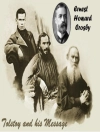In ‘The Children of the World, ‘ Paul Heyse crafts a poignant narrative that delves into the lives of diverse children across various cultures. Utilizing a rich tapestry of lyrical prose and vivid imagery, Heyse explores themes of innocence, adventure, and the universal bond of childhood, juxtaposing joyful experiences with the harsh realities of life. The book is positioned within the context of late 19th-century European literature, amidst an increasing fascination with childhood as a distinct and significant stage of life, as well as a burgeoning interest in cross-cultural narratives. Paul Heyse, a Nobel Prize laureate, was acutely aware of the complexities of human experience, having been influenced by his extensive travels and exposure to different cultures throughout his life. His literary career, marked by a blend of romanticism and realism, reflects a deep empathy for the struggles and joys of individuals, particularly the young. Heyse’s ability to intertwine personal and societal narratives makes ‘The Children of the World’ not just a collection of stories, but a profound exploration of the youthful spirit. This book is a must-read for those who wish to gain insights into the diverse experiences of childhood across the globe. It appeals not only to literary enthusiasts but also to educators and parents who seek to understand the complexities of growing up in an increasingly connected world. Heyse’s masterful storytelling will resonate with readers of all ages, inviting them to reflect on the fond and bittersweet memories of their own childhoods.
Circa l’autore
Paul Heyse (1830–1914) was a distinguished German writer and translator, celebrated for his literary versatility and proficiency in storytelling. Born on March 15, 1830, in Berlin, Heyse was the son of a university professor and showed early promise in the realm of literature. A prolific author, Heyse penned novels, short stories, poetry, and plays, displaying a keen sensitivity to the nuances of language and the complexities of human emotions. His work ‘The Children of the World’ (‘Kinder der Welt’, 1873) remains a testament to his narrative craftsmanship, exploring themes of love, morality, and societal conventions with intricate character development and psychological insight. Heyse’s literary style is characterized by its elegant prose, often infused with a sense of romanticism and a deep understanding of classical and contemporary literature. In 1910, his contributions to literature were recognized with the Nobel Prize in Literature, honoring his ‘Artistic achievement as a lyrical poet and the versatility, vigor, and originality with which he has cultivated the field of dramatic, epic, and narrative art’. Heyse’s legacy lives on through his extensive body of work, which continues to engage and inspire readers and scholars alike.











![Copertina di Terry E Jenkins: Don't Blink [You might miss something] Copertina di Terry E Jenkins: Don't Blink [You might miss something]](https://static.worldofdigitals.com/thumb_webp/628/9781647503628.webp)
